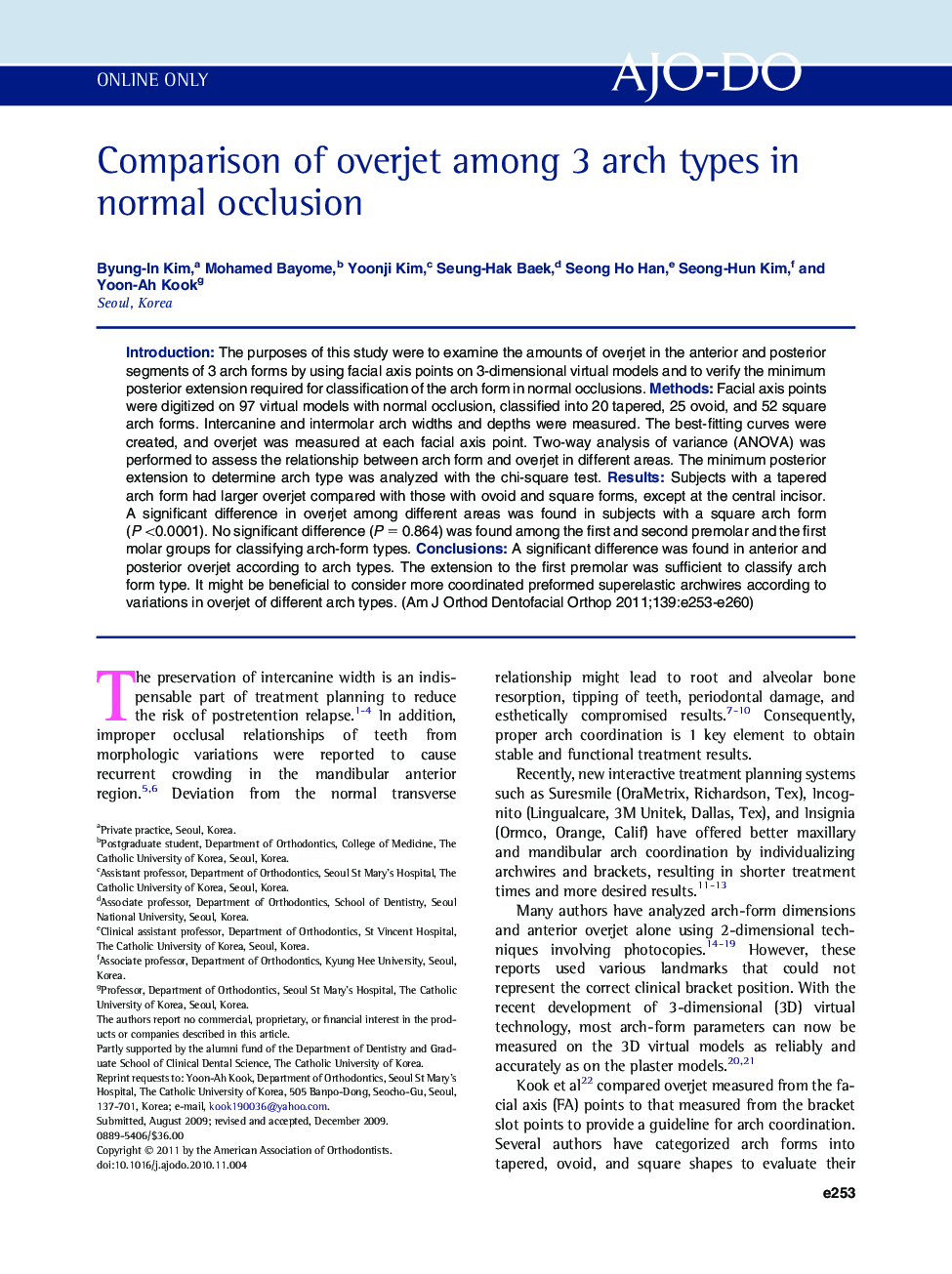| Article ID | Journal | Published Year | Pages | File Type |
|---|---|---|---|---|
| 3117115 | American Journal of Orthodontics and Dentofacial Orthopedics | 2011 | 8 Pages |
IntroductionThe purposes of this study were to examine the amounts of overjet in the anterior and posterior segments of 3 arch forms by using facial axis points on 3-dimensional virtual models and to verify the minimum posterior extension required for classification of the arch form in normal occlusions.MethodsFacial axis points were digitized on 97 virtual models with normal occlusion, classified into 20 tapered, 25 ovoid, and 52 square arch forms. Intercanine and intermolar arch widths and depths were measured. The best-fitting curves were created, and overjet was measured at each facial axis point. Two-way analysis of variance (ANOVA) was performed to assess the relationship between arch form and overjet in different areas. The minimum posterior extension to determine arch type was analyzed with the chi-square test.ResultsSubjects with a tapered arch form had larger overjet compared with those with ovoid and square forms, except at the central incisor. A significant difference in overjet among different areas was found in subjects with a square arch form (P <0.0001). No significant difference (P = 0.864) was found among the first and second premolar and the first molar groups for classifying arch-form types.ConclusionsA significant difference was found in anterior and posterior overjet according to arch types. The extension to the first premolar was sufficient to classify arch form type. It might be beneficial to consider more coordinated preformed superelastic archwires according to variations in overjet of different arch types.
